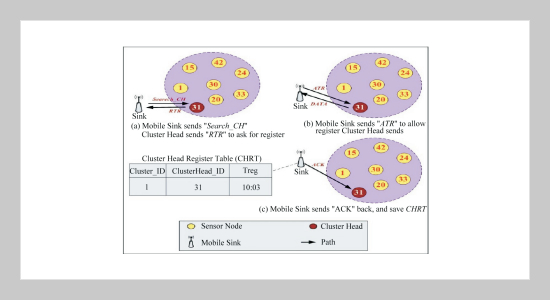Ying-Hong Wang1, Chen-An Wang This email address is being protected from spambots. You need JavaScript enabled to view it.1, Chin-Yung Yu1 and Ping-Fang Fu1 1Department of Computer Science & Information Engineering, Tamkang University, Tamsui, Taiwan 251, R.O.C.
Received:
March 7, 2008
Accepted:
March 11, 2009
Publication Date:
June 1, 2009
Download Citation:
||https://doi.org/10.6180/jase.2009.12.2.11
Wireless Sensor Networks (WSNs) are event-based systems that rely on the collective effort of several micro-sensor nodes. Reliable event detection at the sink is based on collective information provided by source nodes. When data needs to be gathered from a selected set of nodes and transmit to sink in the network. However the sensor nodes often face the critical challenge among all is the constraint on limited battery energy. Therefore, how to minimize the energy consumption while maintaining an extended network lifetime becomes the most critical issue in the WSNs. We present a routing protocol in cluster-based WSNs called the Register mechanism Routing Protocol (RRP). The RRP protocol is attempted to resolve the above issue. The performance of RRP is then compared to routing protocol such as HCDD (Hierarchical Cluster-based Data Dissemination in WSNs) and TTDD (Two-tier Data Dissemination Model for Large scale WSNs). The simulation results demonstrate that RRP may reach energy savings up to 21%~50%.ABSTRACT
Keywords:
Wireless Sensor Networks, Energy-Efficiency, Cluster-Based Routing, Mobile Sink
REFERENCES
















